
JOURNAL OF PHYTOPATHOLOGY
Scope & Guideline
Driving forward the science of plant-pathogen interactions.
Introduction
Aims and Scopes
- Plant Pathogen Identification and Characterization:
The journal emphasizes the identification and molecular characterization of various plant pathogens, including fungi, bacteria, viruses, and nematodes, providing insights into their biology and pathogenic mechanisms. - Disease Resistance and Management Strategies:
Research articles often address the development of resistant plant varieties and the implementation of effective management strategies against plant diseases, including chemical, biological, and cultural practices. - Epidemiology and Disease Modeling:
The journal includes studies on the epidemiology of plant diseases, utilizing modeling approaches to predict disease outbreaks and impacts on crop yield, which is critical for effective management. - Impact of Environmental Factors on Plant Health:
Research exploring how environmental conditions affect the incidence and severity of plant diseases is a key focus, highlighting the interplay between climate change and plant pathology. - Biocontrol and Sustainable Practices:
A significant portion of the journal's articles discuss biocontrol agents and sustainable agricultural practices aimed at reducing chemical inputs while effectively managing plant diseases.
Trending and Emerging
- Molecular and Genomic Studies of Pathogens:
There is a growing emphasis on molecular and genomic approaches to understand plant pathogens, including whole-genome sequencing and transcriptomic studies, which provide deeper insights into pathogenicity and resistance mechanisms. - Integrated Disease Management Approaches:
Research focusing on integrated disease management strategies that combine biological, chemical, and cultural practices is increasingly prominent, reflecting a shift towards sustainable agriculture. - Climate Change Impact on Plant Diseases:
The journal is seeing an increase in studies investigating the effects of climate change on plant disease dynamics, which is crucial for developing adaptive management strategies. - Plant-Microbe Interactions:
Emerging research explores complex interactions between plants and their associated microbial communities, including endophytes and rhizobacteria, which can influence disease resistance and overall plant health. - Technological Advances in Disease Detection:
Innovations in detection technologies, including remote sensing and molecular diagnostics, are increasingly featured, highlighting the importance of timely and accurate disease detection in crop management.
Declining or Waning
- Traditional Chemical Control Methods:
There is a noticeable decline in research focused solely on conventional chemical control methods for managing plant diseases, as the emphasis shifts towards integrated pest management and sustainable practices. - Basic Morphological Studies:
Research articles that primarily focus on basic morphological descriptions of pathogens without molecular or genetic analysis have decreased, indicating a trend towards more sophisticated and detailed studies. - Single Pathogen Studies:
The journal has seen a reduction in publications centered on single pathogen studies, with a growing preference for research that investigates multiple pathogens or complex disease interactions. - Invasive Species Research:
Research on invasive plant pathogens appears less frequent, possibly due to a shift in focus towards more impactful and economically relevant plant diseases. - Historical and Archeological Studies of Plant Diseases:
There is a waning interest in historical studies of plant diseases, which may be overshadowed by the urgency of contemporary issues related to crop production and food security.
Similar Journals
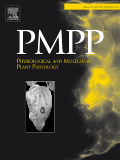
PHYSIOLOGICAL AND MOLECULAR PLANT PATHOLOGY
Cultivating knowledge for a healthier planet.Physiological and Molecular Plant Pathology is a leading journal published by Academic Press Ltd - Elsevier Science Ltd, dedicated to advancing our understanding of plant diseases through the synthesis of physiological and molecular perspectives. With an ISSN of 0885-5765, this esteemed journal has been a cornerstone in the field since its inception in 1986 and continues to publish critical research findings up to 2024. Notably, it holds a strong reputation in Plant Science, ranked Q2, and genetics, ranked Q3, reflecting its impactful contributions to these important areas of study. The journal is recognized within Scopus, achieving a ranking of 151 out of 516 in Plant Science, positioning it within the 70th percentile, making it a vital resource for researchers and students alike. While it is not an open-access journal, the insights provided in each issue are invaluable for those dedicated to understanding the complexities of plant pathology and enhancing agricultural resilience. Researchers, professionals, and students in the field are encouraged to explore and contribute to this pivotal journal, which plays a crucial role in driving innovation and discovery in plant health sciences.

Legume Research
Connecting Science and Sustainability through LegumesLegume Research, published by the AGRICULTURAL RESEARCH COMMUNICATION CENTRE in India, is an essential peer-reviewed journal focusing on advancements in the field of agronomy, crop science, soil science, and plant science. With an ISSN of 0250-5371 and operating since 2008, this journal caters to researchers, agricultural professionals, and students interested in the critical role of legumes in sustainable agriculture and food security. It ranks within the third quartile (Q3) in several prominent categories, reflecting its contribution to the agricultural and biological sciences community—ranking #279 in Agronomy and Crop Science, #113 in Soil Science, and #376 in Plant Science based on Scopus metrics. Although not open access, Legume Research remains a vital resource for those seeking to enhance their knowledge and contribute novel research findings in the ever-evolving discipline of legume cultivation and utilization. With a clear objective to disseminate impactful research, this journal significantly contributes to the global understanding of legumes' ecological, economic, and nutritional importance.

BANGLADESH JOURNAL OF BOTANY
Advancing Botanical Knowledge in BangladeshBANGLADESH JOURNAL OF BOTANY is a prominent publication in the field of plant sciences, dedicated to advancing research and knowledge within the botanical community. Published by the BANGLADESH BOTANICAL SOC, this journal serves as a vital platform for researchers and scholars seeking to disseminate their findings related to plant biology, ecology, and conservation practices, particularly within the unique context of Bangladesh's diverse flora. With an ISSN of 0253-5416 and an E-ISSN of 2079-9926, the journal encompasses a wide scope of topics, reflecting interdisciplinary approaches in botanical research. Since its inception, with convergence periods from 1996 to 2001 and from 2003 to 2024, it has garnered recognition, positioned in the Q4 category in the Plant Science field with a ranking of #459/516 in Scopus, indicating its contribution to the field despite its developing impact. Operating within Bangladesh, at the UNIV DACCA DEPT BOTANY, the journal provides a crucial insight into the ecological and agricultural implications of plant studies in the region, catering to the needs of academics, professionals, and students eager to engage with contemporary botanical research.
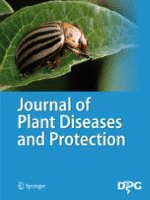
Journal of Plant Diseases and Protection
Fostering Global Collaboration in Plant ScienceThe Journal of Plant Diseases and Protection, published by SPRINGER HEIDELBERG in Germany, is a premier platform for the dissemination of cutting-edge research in the fields of Agronomy, Horticulture, and Plant Science. With its Q2 ranking in multiple categories as of 2023, this journal stands out in the academic landscape, highlighting its strong performance with a notable Scopus rank of 22nd in Horticulture and placing in the top percentile for Agronomy and Plant Science. The journal spans from 2006 to 2024, making it a valuable resource for researchers, professionals, and students seeking to stay abreast of advancements in the understanding of plant diseases and their protection. The Open Access options further enhance its accessibility, fostering a global exchange of knowledge essential for addressing contemporary agricultural challenges.
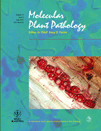
MOLECULAR PLANT PATHOLOGY
Elevating the science of plant protection.MOLECULAR PLANT PATHOLOGY, published by Wiley, is a leading academic journal in the fields of Agronomy, Molecular Biology, Plant Science, and Soil Science, with a strong reputation underscored by its impressive Q1 rankings across multiple categories and a Scopus rank placing it in the top echelons of its fields. Since embracing Open Access in 2019, this journal has significantly broadened its reach, enhancing visibility and accessibility for researchers, professionals, and students alike. With a commitment to publishing high-quality, innovative research, MOLECULAR PLANT PATHOLOGY serves as a critical platform for advancing our understanding of plant diseases and pathogenesis, contributing to the development of sustainable agricultural practices. As a vital resource for scholarly communication, it fosters collaboration among scientists and supports the sharing of vital knowledge that addresses issues of global food security and environmental health.
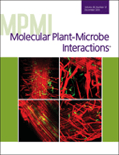
MOLECULAR PLANT-MICROBE INTERACTIONS
Unraveling the Secrets of Symbiosis for Sustainable AgricultureMOLECULAR PLANT-MICROBE INTERACTIONS is a premier journal dedicated to the exploration of the complex interactions between plants and microbes, providing a vital platform for researchers in agronomy, crop science, and plant physiology. Published by the American Phytopathological Society, this journal has been serving the academic community since 1988 and continues to be at the forefront of advances in molecular biology and plant-microbe symbiosis, with a notable impact factor reflecting its esteemed position in the field. As a Q1 journal in both Agronomy and Crop Science and Medicine (miscellaneous), and holding a significant ranking in the Scopus categories, it is recognized for publishing high-quality, peer-reviewed research that is essential for understanding and improving agricultural practices. Although it is not an open-access journal, it provides critical insights that facilitate collaborative efforts among researchers, professionals, and students alike. The journal’s objectives focus on enhancing our understanding of plant health, disease resistance, and ecological sustainability, making it a crucial resource for anyone interested in the intricate research landscape of plant-microbe dynamics.

Zemdirbyste-Agriculture
Advancing agricultural knowledge for a sustainable future.Zemdirbyste-Agriculture is a prominent journal dedicated to advancing the field of agricultural sciences, with a particular focus on agronomy and crop science. Published by the Lithuanian Research Centre Agriculture & Forestry, this open access journal has been fostering knowledge sharing and scientific discourse since 2004, allowing researchers, professionals, and students unrestricted access to its content. Located in the beautiful country of Lithuania, specifically at Vytautas Magnus University, this journal plays a significant role in disseminating innovative research findings. With a 2023 Scopus ranking of #246 out of 406 in the category of Agricultural and Biological Sciences, Zemdirbyste-Agriculture falls within the Q3 quartile, reflecting its growing influence in the academic community. This journal, which has converged its publication focus from 2008 to 2023, aims to provide a platform for scientists to share their critical insights on agricultural practices, sustainability, and technological advancements in crop science, thereby contributing to the global discourse on food security and environmental health.

Tropical Plant Pathology
Elevating research on tropical plant challenges.Tropical Plant Pathology, published by Springer, is a leading journal in the fields of Agronomy and Crop Science as well as Plant Science, as evidenced by its impressive position in the Q2 quartile rankings for 2023. This esteemed journal, with an ISSN of 1983-2052, focuses on the intricacies of plant diseases and their management, showcasing significant research that addresses challenges faced by agronomists and plant scientists, particularly in tropical environments. With a Scopus ranking of 147th in Plant Science and 116th in Agronomy and Crop Science, it is recognized for its contribution to the advancement of knowledge in these areas, which is crucial for food security and sustainable agriculture. The journal operates under a model that facilitates researchers and professionals in disseminating their work effectively, fostering an ongoing dialogue among scholars dedicated to enhancing crop health and productivity. Discover more about groundbreaking studies in plant pathology that shape the future of agriculture!
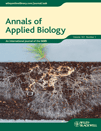
ANNALS OF APPLIED BIOLOGY
Transforming research into practice for better crop yields.Annals of Applied Biology, published by Wiley, stands as a pivotal resource in the fields of Agronomy and Crop Science, boasting an impressive impact factor that reflects its significance and influence in the academic community. With a storied history dating back to 1914, this journal serves as a comprehensive platform for innovative research and applied studies in agricultural biology, specifically aimed at improving crop production and sustainable practices. Currently categorized in the Q1 quartile for Agronomy and Crop Science in 2023, it ranks an admirable 82 out of 406 in the Scopus database, placing it within the top 79th percentile of its category. Researchers, professionals, and students worldwide rely on the Annals of Applied Biology for cutting-edge insights and advancements in applied biological research, making it a vital component of the scientific discourse aimed at addressing pressing agricultural challenges. Please note that this journal does not offer open access options, thus ensuring a rigorous peer review process and the integrity of published work.

JOURNAL OF PLANT PATHOLOGY
Exploring Innovations in PhytopathologyJOURNAL OF PLANT PATHOLOGY, published by SPRINGER, is a premier academic journal dedicated to advancing the understanding of phytopathology and related fields. With a strong international presence and an impact factor that reflects its influence in the scientific community, this journal offers essential insights to researchers, professionals, and students engaged in plant health. Since its inception in 1997, it has consistently provided a platform for innovative research, contributing to the Q2 rank in Plant Science as per the 2023 category quartiles. The journal covers a broad spectrum of topics related to plant diseases, their management, and the ecological impacts they pose, ensuring relevance to contemporary challenges in agriculture and sustainability. While the journal does not currently offer Open Access options, it remains a crucial resource for those looking to deepen their knowledge and bolster their research endeavors in the vital area of plant pathology.